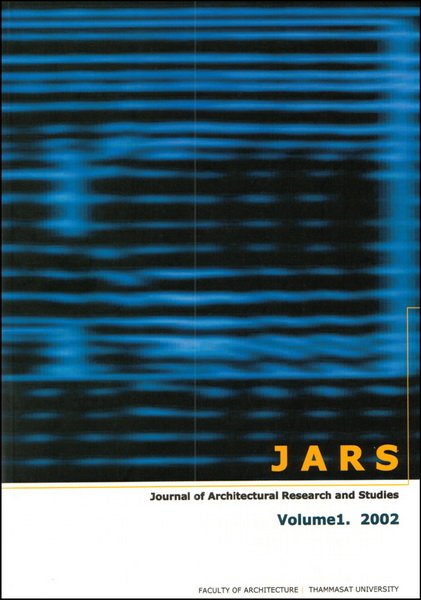Strategic Planning for Architectural Practice in Post Recession Period
Main Article Content
Abstract
Thailand’s ailing economy in the past few years has a great impact on many business sectors including real estate and construction industry. Limited amount of construction works provokes fierce competitions among the contenders. However, not all business has gone through the difficulties and survives. That is one of the reasons for all sectors’ in the construction industry to make a quick move to improve their own performance and capability. The glorious past of Thai architects has already gone with the economy. At the moment they are struggling to be commissioned by any possible way to maintain financial viability. Moreover, problems concerning Thai architects’ role such as mistaken public opinion about architect and low efficiency architectural practice compared to international standard are long overdue and waiting to be solved urgently.
This article discusses problems of traditional architectural practice and the possibility to shift the architect’s role to the more appropriate one as “a built environment specialist” willing to provide a full service to the society. The new role would give a new breath of life to the declined profession by creating a strategy that helps to enhance the new potential. However, the contents of this article investigates only the elementary step of the full competitive strategy creating process, an analysis of distinctive capability. All factors in the process such as organization structure, innovation, reputation and strategic asset are extensively discussed. The other two procedures of creating strategy, establishing the distinctive advantage and creating a competitive strategy, will be achieved later on once the first stage is completed in order to establish the new approach to high efficiency architectural practice.
Downloads
Article Details

This work is licensed under a Creative Commons Attribution-NonCommercial-NoDerivatives 4.0 International License.
All material is licensed under the terms of the Creative Commons Attribution 4.0 International (CC-BY-NC-ND 4.0) License, unless otherwise stated. As such, authors are free to share, copy, and redistribute the material in any medium or format. The authors must give appropriate credit, provide a link to the license, and indicate if changes were made. The authors may do so in any reasonable manner, but not in any way that suggests the licensor endorses you or your use. The authors may not use the material for commercial purposes. If the authors remix, transform, or build upon the material, they may not distribute the modified material, unless permission is obtained from JARS. Final, accepted versions of the paper may be posted on third party repositories, provided appropriate acknowledgement to the original source is clearly noted.
References
ผุสดี ทิพทัส. (2539). สถาปนิกสยาม: พื้นฐานบทบาทผลงานและแนวคิด(พ.ศ. 2475-2537). 2เลม. กรุงเทพฯ: สมาคม-สถาปนิกสยามในพระบรมราชูปถัมภ์.
เพ็ญสุภา สุขคตะ. (2543). เยี่ยมเรือนเยือนอดีต.กรุงเทพฯ: ร่วมด้วยช่วยกัน.
วิมลสิทธิ์ หรยางกูร และคนอื่นๆ. (2536). พัฒนาการแนวความคิดและรูปแบบของงานสถาปัตยกรรม: อดีต ปัจจุบัน และอนาคต.กรุงเทพฯ: สมาคมสถาปนิกสยามในพระบรมราชูปถัมภ์.
สมาคมสถาปนิกสยามในพระบรมราชูปถัมภ์. (2537). คู่มือสถาปนิก2537.กรุงเทพฯ: สมาคมสถาปนิกสยามในพระบรม-ราชูปถัมภ์.
Bloom, P. N. (1984). Effective marketing for professional services. Harvard Business Review. September-October, 102-110.


